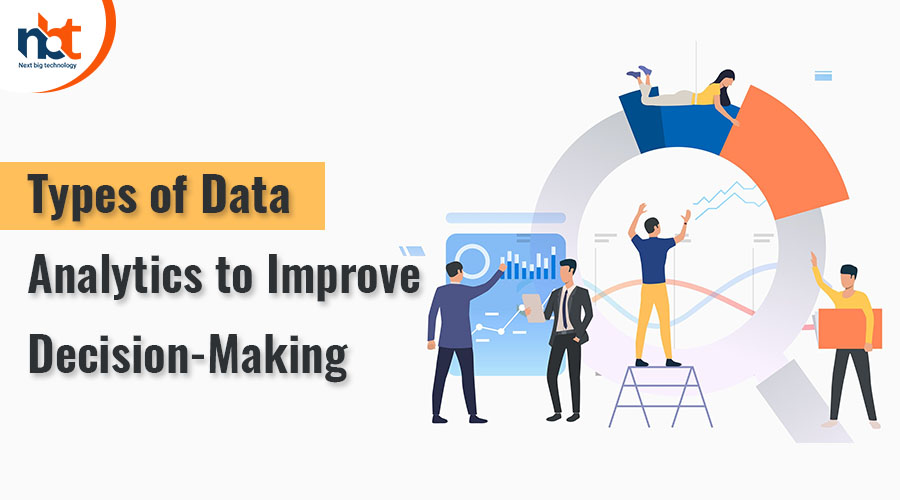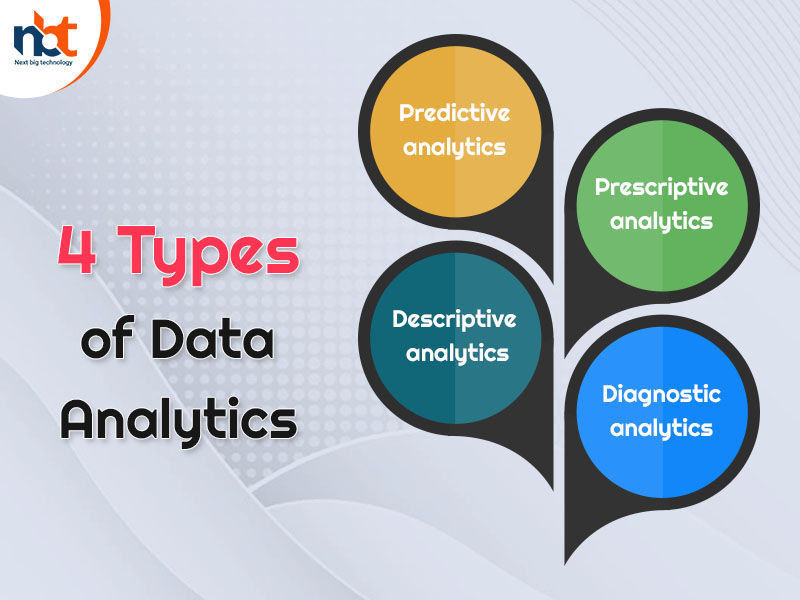Make sure you’re employing the right balance of data analytics types if, despite your best efforts, you’re still making judgments based on gut feelings rather than proof. Continue reading to obtain specialised data analytics assistance from our experts.
“He who wishes to look for pearls must plunge down,” stated John Dryden in the 17th century. Although the remark was not written with complex data analytics in mind, it effectively captures its core. Let’s see how far we can dig into data with Next Big Technology to get those much-needed and fact-based insights.
Table of Contents
Descriptive analytics
Analytical kinds are divided into four categories. We’ll start with the most basic and work our way up to the most complex. It just so happens that the more complicated an analysis is, the more value it adds.
Diagnostic analytics
Descriptive analytics provides an explanation for what occurred. Let us use an example from Nbt’s experience: manufacturing was able to answer a series of “what occurred” questions and choose target product categories after analyzing monthly sales and income by product group, as well as the total quantity of metal parts produced per month.
Descriptive analytics juggles raw data from a variety of sources to provide significant historical insights. These findings, on the other hand, only indicate that something is wrong or right without elucidating why. As a result, our data consultants advise highly data-driven firms to combine descriptive analytics with other types of data analytics rather than relying solely on it.
Predictive analytics
At this point, past data can be compared to other data in order to determine why something occurred. For example, you can see how a store can drill down into sales and gross profit to figure out why they missed their net profit objective in NBT’s BI demo. Another example from one of our data analytics projects: in the healthcare industry, customer segmentation combined with multiple filters (such as diagnoses and prescribed medications) enabled the identification of medication influence.
Diagnostic analytics is used to conduct a thorough investigation of an issue. Furthermore, a firm should have exact information on hand; otherwise, data acquisition would be time-consuming and unique for each issue.
Prescriptive analytics
Predictive analytics forecasts what will most likely occur. It makes use of descriptive and diagnostic analytics data to discover clusters and exceptions, as well as to anticipate future trends, making it a powerful forecasting tool for the financial services industry. To learn more about how advanced data analytics helped a leading FMCG company estimate what they may expect after adjusting brand positioning, see Our case study.
Predictive analytics is a sort of advanced analytics that offers a number of benefits, including sophisticated analysis based on machine or deep learning and a proactive approach enabled by forecasts. Our data experts, on the other hand, emphasize unequivocally that forecasting is merely an estimate whose accuracy is largely dependent on the quality of the data and the stability of the situation, necessitating careful treatment and continual optimization.
What kinds of data analytics do businesses opt for?
Let’s look at different surveys on the topic from 2016 to 2019 to see whether there is a dominant type of data analytics.
More than 2,000 executives were asked to identify a category that best characterized their company’s decision-making process for the 2016 Global Data and Analytics Survey: Big Decisions. The C-suite was also asked which types of analytics they used the most. The following were the outcomes: In the category of “rarely data-driven decision-making,” descriptive analytics led (58 percent); diagnostic analytics lead (34 percent) in the “somewhat data-driven” category; and predictive analytics (36 percent) led in the “very data-driven” category.
Two thousand executives were polled by BARC in 2017 on the rising relevance of sophisticated analytics. Advanced analytics was a catch-all term for both predictive and prescriptive analytics.
According to the 2018 Advanced and Predictive Analytics Market Research, a majority of respondents rated advanced analytics as “vital” or “extremely important” for the first time.
The C-suite continued to highlight advanced analytics as one of the most important business intelligence topics in the BARC’s BI Trend Monitor 2019 poll.
What kinds of data analytics does your company require?
We recommend that you answer the following questions to determine the optimum combination of data analytics types for your company:
- What is the condition of data analytics in my organization right now?
- How far should I delve into the data? Are the solutions to my difficulties self-evident?
- How close are my present data insights to the ones I require?
These answers can assist you in deciding on a data analytics approach. Ideally, the plan should allow for the gradual implementation of various analytics kinds, starting with the most basic and progressing to the most advanced. Following that, develop a data analytics solution with the finest technology stack and a defined roadmap for execution and deployment.
You could attempt to execute all of these duties with the help of internal staff. In this instance, you’ll need to hire and train highly trained data analytics experts, which will most likely be time-consuming and costly. We recommend turning to an expert data analytics supplier with a background in your industry to maximize the ROI from deploying data analytics in your firm. From analyzing your present data analytics status and selecting the correct mix of data analytics to bring the technological solution to life, a mature vendor will share best practices and take care of everything. If the approach outlined above appeals to you, our data analytics services are available to you.



















